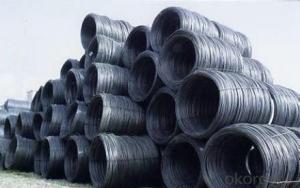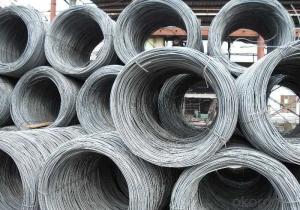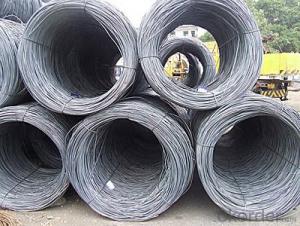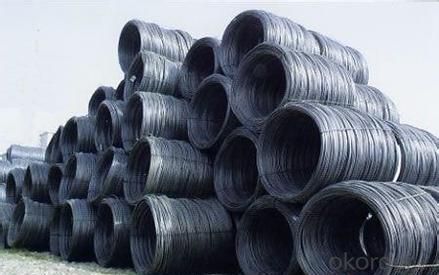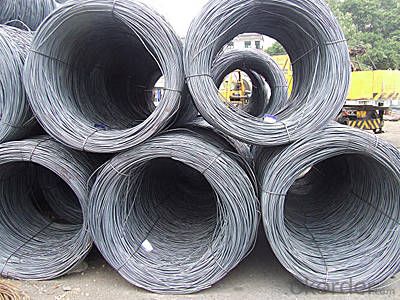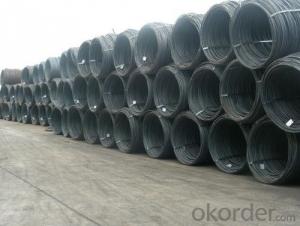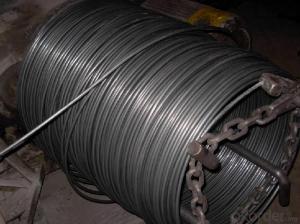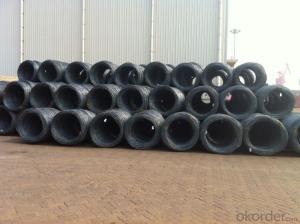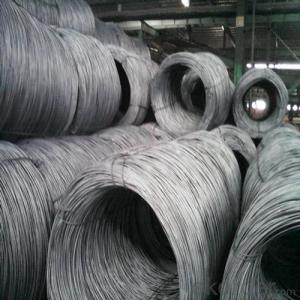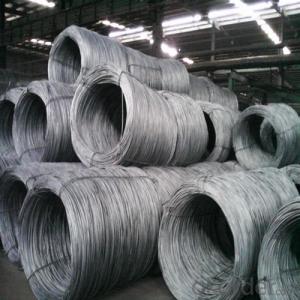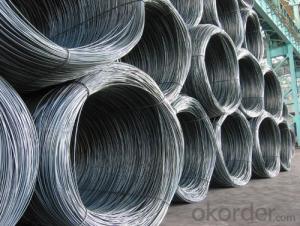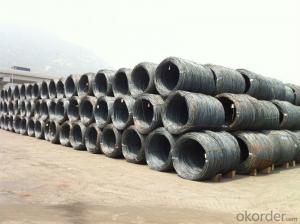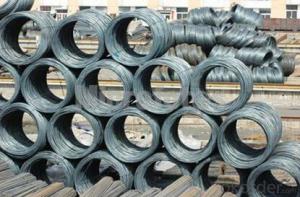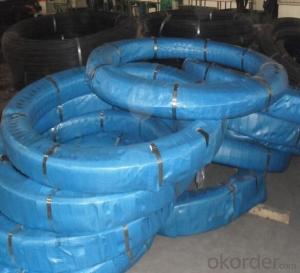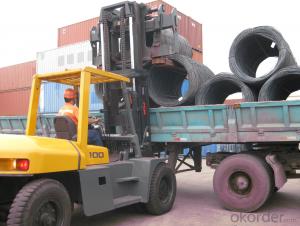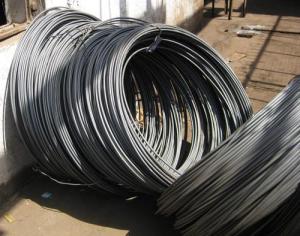Hot Rolled Carbon Steel Wire Rod 10mm with High Quality
- Loading Port:
- China Main Port
- Payment Terms:
- TT or LC
- Min Order Qty:
- 20 m.t.
- Supply Capability:
- 20000 m.t./month
OKorder Service Pledge
OKorder Financial Service
You Might Also Like
Product Description:
OKorder is offering Hot Rolled Carbon Steel Wire Rod 10mm with High Quality at great prices with worldwide shipping. Our supplier is a world-class manufacturer of steel, with our products utilized the world over. OKorder annually supplies products to European, North American and Asian markets. We provide quotations within 24 hours of receiving an inquiry and guarantee competitive prices.
Product Applications:
Hot Rolled Carbon Steel Wire Rod 10mm with High Quality is widely used in construction and manufacturing. Carbon steel wire rod is mainly used for reinforcement of reinforced concrete and welded structure or reprocessed (roberts , nail, etc.) materials, especially used to produce wire drawing, welding electrode, nails, spring, electronic, precise machinery parts and so on.
Product Advantages:
OKorder's Hot Rolled Carbon Steel Wire Rod 10mm with High Quality are durable, strong.packed and suitable for wire mesh,nail manufacture and construction
Main Product Features:
· Premium quality
· Prompt delivery & seaworthy packing (30 days after receiving deposit)
· Can be recycled and reused
· Mill test certification
· Professional Service
· Competitive pricing
Product Specifications:
Manufacture: Hot rolled
Grade: SAE1006 SAE1008 SAE1010 SAE1012 SAE1016 SAE1018
Certificates: ISO, SGS, BV, CIQ
Weight per Coil:2-2.05tons
Packaging: Export packing, packed by coil
FAQ:
Q1: Why buy Materials & Equipment from OKorder.com?
A1: All products offered byOKorder.com are carefully selected from China's most reliable manufacturing enterprises. Through its ISO certifications, OKorder.com adheres to the highest standards and a commitment to supply chain safety and customer satisfaction.
Q2: How do we guarantee the quality of our products?
A2: We have established an advanced quality management system which conducts strict quality tests at every step, from raw materials to the final product. At the same time, we provide extensive follow-up service assurances as required.
Q3: How soon can we receive the product after purchase?
A3: Within three days of placing an order, we will begin production. The specific shipping date is dependent upon international and government factors, but is typically 7 to 10 workdays.
Q4: How many tons can be loaded into one 20ft container?
A4: Around 18—20tons
Images:
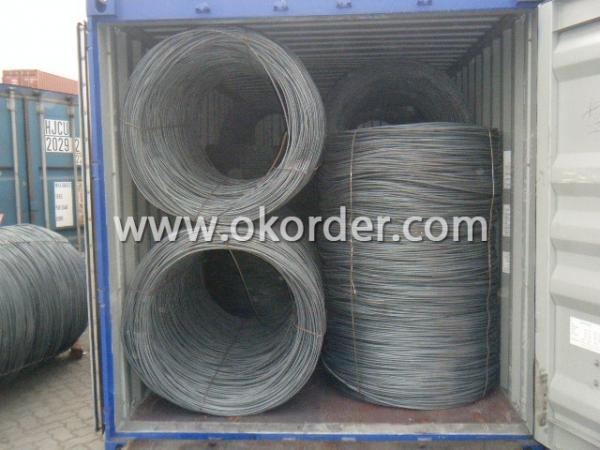
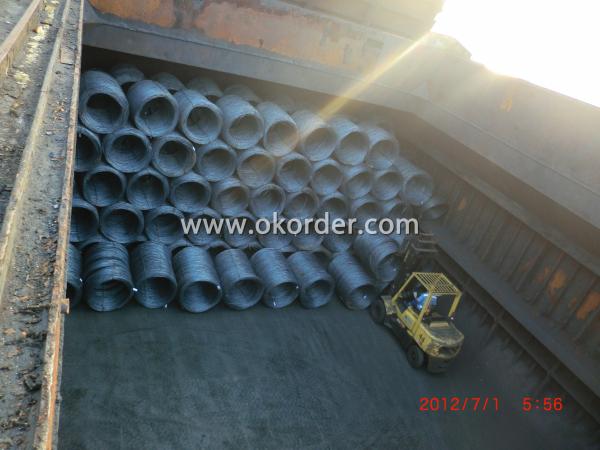
- Q: What are the safety considerations when working with steel wire rod?
- Some safety considerations when working with steel wire rod include wearing appropriate personal protective equipment (PPE) such as gloves, safety glasses, and steel-toed boots to protect against cuts, eye injuries, and foot injuries. It is important to handle the wire rod with caution to prevent it from unraveling or causing puncture injuries. Proper training on the use of tools and machinery involved in the handling and cutting of steel wire rod is essential to prevent accidents. It is also crucial to maintain a clean and organized work area to minimize tripping hazards and to ensure proper storage of the wire rod to prevent it from becoming a safety hazard.
- Q: What are the major applications of high carbon steel wire rod?
- High carbon steel wire rod is commonly used in various applications such as manufacturing springs, cables and wire ropes, automotive components, construction materials, and in the production of nails and screws.
- Q: How is steel wire rod used in the manufacturing of wire racks?
- Wire racks rely heavily on steel wire rod, which acts as the main material for constructing the rack's framework and structure. To transform the wire rod into a long, thin wire, it goes through a series of steps such as heating, rolling, and drawing. This wire is then bent, shaped, and welded to create the different parts of the wire rack, including the sides, shelves, and supports. Due to its high tensile strength and durability, steel wire rod is a perfect choice for wire racks. It can withstand heavy loads and constant use without bending or breaking. Additionally, its corrosion resistance properties ensure that the wire rack remains strong and long-lasting, even in environments with high humidity or moisture exposure. The versatility of steel wire rod allows manufacturers to produce wire racks in a variety of sizes and designs to accommodate different storage needs. Its malleability enables easy manipulation to form various shapes, making it possible to create wire racks with adjustable shelves or collapsible features. This adaptability in design makes wire racks highly customizable for use in different settings, such as homes, offices, warehouses, or retail stores. Moreover, the use of steel wire rod in wire rack manufacturing facilitates efficient production processes. With automated machinery, the wire rod can be easily cut, shaped, and welded, reducing production time and costs. This ease of manufacturing enables mass production, ensuring a steady supply to meet market demands. In conclusion, steel wire rod is essential in manufacturing wire racks due to its strength, durability, and versatility. Its ability to be easily shaped, resistance to corrosion, and cost-effectiveness make it an ideal material for creating wire racks of various sizes and designs.
- Q: What are the main factors affecting the market consolidation of steel wire rod?
- The main factors affecting the market consolidation of steel wire rod are the demand-supply dynamics, industry competition, economies of scale, and regulatory factors. The demand for steel wire rod is influenced by the overall economic growth, infrastructure development, and construction activities. The level of competition within the industry, including the number and size of market players, consolidation trends, and pricing strategies, also plays a significant role in market consolidation. Additionally, the ability to achieve economies of scale through efficient production processes and cost optimization is crucial for market consolidation. Lastly, regulatory factors such as trade policies, tariffs, and environmental regulations can impact the market consolidation of steel wire rod.
- Q: How are steel wire rods used in the manufacturing of mesh screens for filtration and separation?
- Steel wire rods are used in the manufacturing of mesh screens for filtration and separation by being woven together to form a strong and durable mesh structure. These rods provide the necessary strength and rigidity to support the mesh and ensure it can withstand the pressure and demands of the filtration and separation processes.
- Q: What are the different welding processes used for steel wire rod?
- There are several different welding processes used for steel wire rod, including gas metal arc welding (GMAW), flux-cored arc welding (FCAW), gas tungsten arc welding (GTAW), and submerged arc welding (SAW). Each process has its own advantages and is chosen based on factors such as the thickness of the wire rod, the desired weld quality, and the efficiency of the process.
- Q: What are the common quality control tests performed on steel wire rod?
- There are several common quality control tests performed on steel wire rod to ensure its compliance with the required specifications and standards. These tests are essential to guarantee the quality and integrity of the wire rod before it is further processed or used in various applications. Some of the common quality control tests performed on steel wire rod include: 1. Chemical Composition Analysis: This test determines the elemental composition of the steel wire rod, such as the percentage of carbon, manganese, phosphorus, sulfur, and other trace elements. It is crucial to ensure that the composition meets the specified limits to ensure the desired mechanical properties and performance of the wire rod. 2. Mechanical Properties Testing: This involves testing the wire rod for its tensile strength, yield strength, elongation, and other mechanical properties. These tests help determine the wire rod's ability to withstand stress, deformation, and other forces without failure or deformation, ensuring its suitability for the intended application. 3. Dimensional Inspection: This test verifies the dimensional accuracy and consistency of the wire rod. It involves measuring the diameter, roundness, and straightness of the wire rod using precision instruments. This ensures that the wire rod meets the specified size and shape requirements, allowing it to be processed or used reliably. 4. Surface Quality Assessment: The surface quality of the wire rod is inspected visually or using magnification to detect any surface defects such as cracks, scales, pitting, or other imperfections. This ensures that the wire rod has a smooth and defect-free surface, which is essential for achieving good adhesion, corrosion resistance, and appearance in the final product. 5. Ultrasonic Testing: Ultrasonic testing is performed to detect any internal defects or discontinuities in the wire rod, such as inclusions, voids, or cracks. This non-destructive testing technique uses high-frequency sound waves to identify any potential flaws that could compromise the wire rod's strength and integrity. 6. Metallurgical Analysis: This test involves examining the microstructure of the wire rod using microscopy techniques. It helps identify the presence of any undesirable phases, grain size, and overall microstructural integrity. This analysis is crucial to ensure that the wire rod has the desired metallurgical properties, such as fine grain size, homogeneity, and absence of any defects that could affect its performance. By conducting these quality control tests on steel wire rod, manufacturers can ensure that the product meets the required standards, specifications, and customer expectations. This, in turn, helps maintain the quality and reliability of the wire rod, ensuring its safe and effective use in various industries such as construction, automotive, and manufacturing.
- Q: What are the advantages of using steel wire rod in construction?
- There are several advantages of using steel wire rod in construction. Firstly, steel wire rod provides high tensile strength, making it a reliable choice for reinforcing concrete structures and enhancing their overall durability. Secondly, steel wire rod is corrosion-resistant, ensuring longevity and reduced maintenance costs. Additionally, its flexibility allows for easy bending and shaping, making it suitable for various construction applications. Lastly, steel wire rod is readily available in different sizes and grades, offering flexibility in design and construction projects.
- Q: What are the different types of steel wire rod testing equipment after wire drawing?
- There are several types of steel wire rod testing equipment that are used after wire drawing. These include tensile testing machines, which measure the strength and elasticity of the wire; hardness testers, which determine the wire's resistance to indentation or scratching; diameter measuring devices, which ensure the wire's uniformity; and surface inspection systems, which detect any defects or irregularities on the wire's surface. Additionally, there may be specific testing equipment for checking the wire's chemical composition or conducting non-destructive testing.
- Q: How is steel wire rod used in the manufacturing of wire for power generation systems?
- Wire rod made of steel is a crucial raw material utilized in the production of wire for power generation systems. It acts as the main material for manufacturing top-quality cables used for transmitting and distributing electricity from power plants to various destinations. The manufacturing process commences by carefully selecting steel wire rod based on its specific properties, such as strength, durability, and conductivity. The rod is then heated to the suitable temperature and passed through a series of dies to shape it into the desired wire diameter. This process, known as wire drawing, involves reducing the rod's diameter while increasing its length. After the wire has been drawn to the required size, it undergoes various treatments to enhance its mechanical properties. These treatments may include annealing, where the wire is heated and gradually cooled to relieve internal stresses and improve its flexibility and ductility. Additionally, the wire may be galvanized, which involves applying a protective layer of zinc to prevent corrosion and prolong its lifespan. The manufactured wire is then utilized in the construction of power transmission and distribution cables. These cables play a crucial role in efficiently and safely delivering electricity over long distances. The steel wire provides the necessary strength and tensile properties to support the cables' weight and withstand the mechanical stresses during installation and operation. It also ensures that the cables maintain their shape and structure even when subjected to external forces like wind, ice, and temperature changes. Furthermore, the electrical conductivity of the steel wire allows for efficient transmission of electricity, reducing power losses during transmission. This property is particularly important in power generation systems, where minimizing energy losses is vital for the effective and economical delivery of electricity. In conclusion, steel wire rod is an indispensable component in the production of wire for power generation systems. It possesses the required mechanical strength, durability, and electrical conductivity needed for power transmission and distribution cables. By enabling efficient and reliable electricity transmission, steel wire plays a crucial role in powering our homes, businesses, and industries.
Send your message to us
Hot Rolled Carbon Steel Wire Rod 10mm with High Quality
- Loading Port:
- China Main Port
- Payment Terms:
- TT or LC
- Min Order Qty:
- 20 m.t.
- Supply Capability:
- 20000 m.t./month
OKorder Service Pledge
OKorder Financial Service
Similar products
Hot products
Hot Searches
Related keywords
